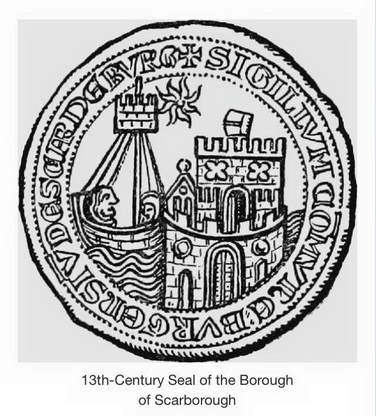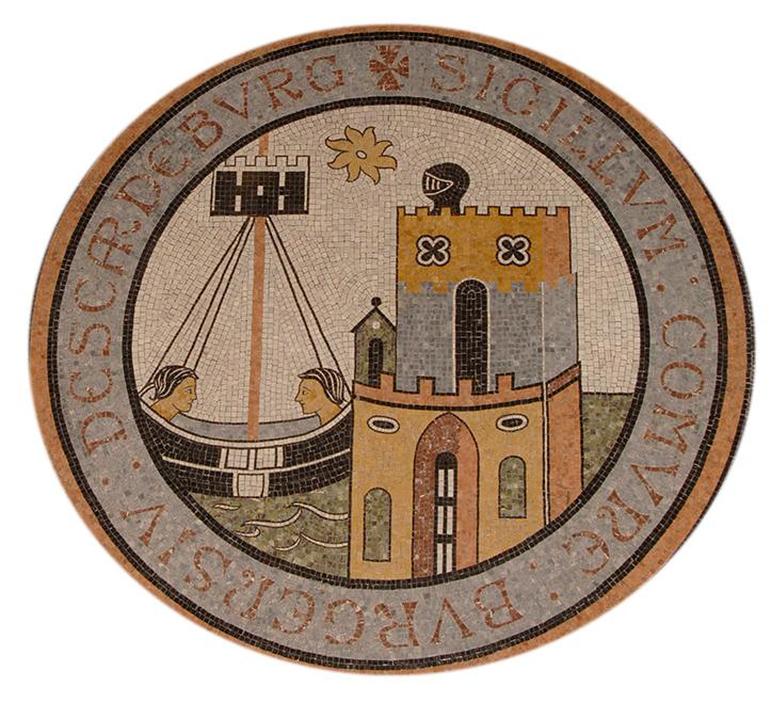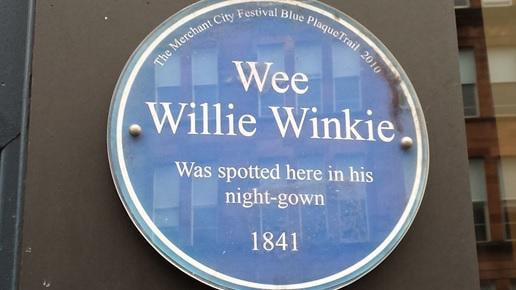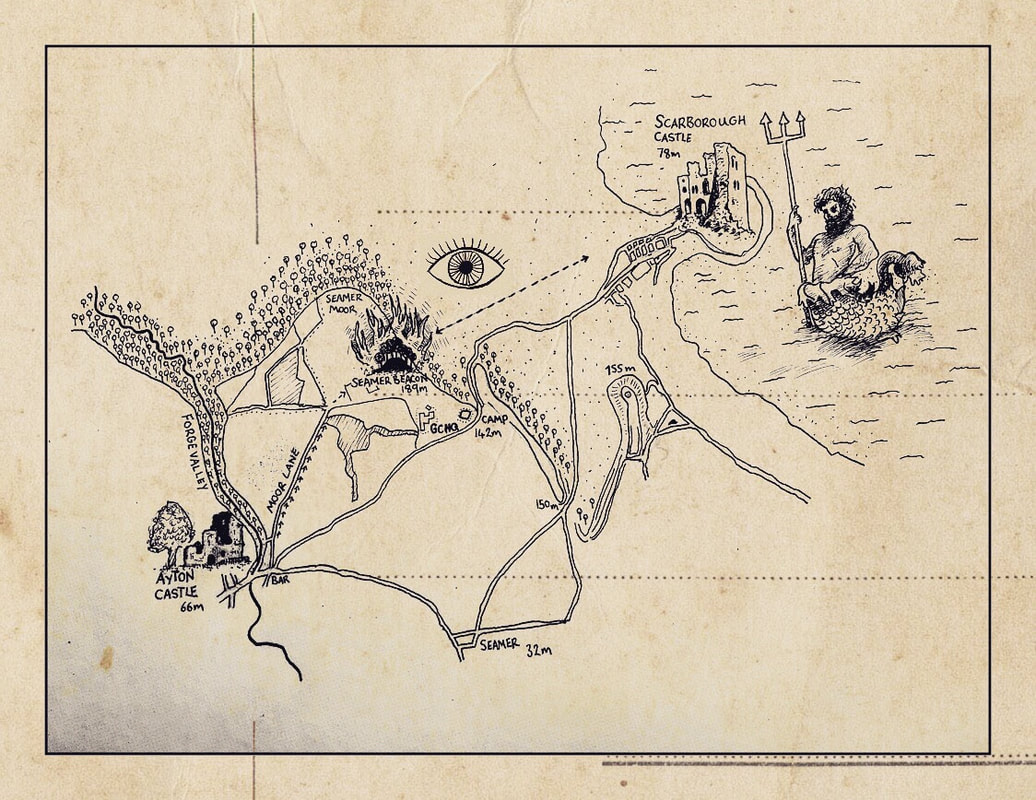
Seamer Beacon, Wee Willlie Winkie and GCHQ
Ayton castle was a satellite castle of Scarborough, probably used as an early-warning station. Ayton castle was more of a fortified tower house than a castle, sitting in a prominent position overlooking the Vale of Pickering. Scarborough castle could be given an early-warning signal of approaching inland dangers by the lighting of Seamer Beacon on Seamer Moor.
Following the track of Moor Lane over Seamer Moor from Ayton Castle to Seamer Beacon, warning signals could be transmitted quickly to the castle and surrounding area. The clump of Scots pine that sits on top of the beacon can be seen from as far away as Malton. When lit, the beacon must have been an imposing sight and the distance it would have been visible from is anybody’s guess.
Seamer Beacon is a large group of Bronze Age round barrows, or tumuli, joined together to make a large prominent feature in the landscape which can be seen from just about anywhere in town. At an elevation of 189m, it is the most prominent location around Scarborough, beaten only by the stone circle on Standing Stone Rigg, at 206m. Historic England reckons “the deliberate use of such a prominent location implies that this location was seen as important during the prehistoric period”.
The main barrow contained a ring of curb stones round the base. They were removed and the top of the beacon levelled when Albert Denison, the first baron of Londesborough, took full advantage of the beacon’s elevated position to make his folly, Baron Albert’s Tower. It is now derelict but the ancient stones still litter the top of the beacon.
Earlier generations took advantage of Scarborough's elevated locations for security reasons. A settlement a little further up the moor, near the corner of the A170 that becomes Stepney Road, was used during the Roman occupation and civil war and possibly as far back as the Iron Age. It is an excellent halfway point between the castle fortifications in Scarborough (also with Iron Age, Roman and civil-war settlements) and the camps at West Heslerton and Malton, which could have provided the other links in the chain of communication relaying information around the area.
The tradition continues to this day, as the moor is home to GCHQ. The base, established in 1912 by the Royal Navy as a wireless telegraph station, supported the defence of the UK and our armed forces abroad. It played a key role in the destruction of the German battleship Bismarck in 1941; it relayed Enigma traffic to Bletchley Park in 1943; and it monitored Soviet naval traffic during the Cold War.
The watch or look-out is an ancient job indeed. An old name for the town look-out was the town wait. There is a wait on Scarborough’s 13th century common seal. The design can be seen on the Newborough clock near Bar Street, above the doors of the old Dean Road jail and on the tiled floor in the entrance to the town hall. This individual in armour could really represent any number of noblemen to have had a vested interest in our town, but the metaphor is still the same.
Scarborough castle held an important defensive position in England and the trusted role of watchman was on the front line of this defence.
Oddly enough, over time the town wait / watchman became the town musician. The watch would originally play or sing a tune while wandering around medieval towns at night, giving the call that “All is well”. But as English town life changed, so the job of the town wait changed. These ‘security minstrels’ adapted their profession to favour performing music. Medieval town waits would have become wassailers and mummers, passing on and relaying knowledge and information by telling stories and singing songs. I wonder if any GCHQ employees are musicians?
The nursery rhyme Wee Willie Winkie has its roots in the medieval town waits. I guess on a simple level so did the early morning / twilight sounds of the milkman and postman, their reassuring sounds strumming a chord in our hard-wired old memory, telling us that we can sleep safe in our beds.
Ayton castle was a satellite castle of Scarborough, probably used as an early-warning station. Ayton castle was more of a fortified tower house than a castle, sitting in a prominent position overlooking the Vale of Pickering. Scarborough castle could be given an early-warning signal of approaching inland dangers by the lighting of Seamer Beacon on Seamer Moor.
Following the track of Moor Lane over Seamer Moor from Ayton Castle to Seamer Beacon, warning signals could be transmitted quickly to the castle and surrounding area. The clump of Scots pine that sits on top of the beacon can be seen from as far away as Malton. When lit, the beacon must have been an imposing sight and the distance it would have been visible from is anybody’s guess.
Seamer Beacon is a large group of Bronze Age round barrows, or tumuli, joined together to make a large prominent feature in the landscape which can be seen from just about anywhere in town. At an elevation of 189m, it is the most prominent location around Scarborough, beaten only by the stone circle on Standing Stone Rigg, at 206m. Historic England reckons “the deliberate use of such a prominent location implies that this location was seen as important during the prehistoric period”.
The main barrow contained a ring of curb stones round the base. They were removed and the top of the beacon levelled when Albert Denison, the first baron of Londesborough, took full advantage of the beacon’s elevated position to make his folly, Baron Albert’s Tower. It is now derelict but the ancient stones still litter the top of the beacon.
Earlier generations took advantage of Scarborough's elevated locations for security reasons. A settlement a little further up the moor, near the corner of the A170 that becomes Stepney Road, was used during the Roman occupation and civil war and possibly as far back as the Iron Age. It is an excellent halfway point between the castle fortifications in Scarborough (also with Iron Age, Roman and civil-war settlements) and the camps at West Heslerton and Malton, which could have provided the other links in the chain of communication relaying information around the area.
The tradition continues to this day, as the moor is home to GCHQ. The base, established in 1912 by the Royal Navy as a wireless telegraph station, supported the defence of the UK and our armed forces abroad. It played a key role in the destruction of the German battleship Bismarck in 1941; it relayed Enigma traffic to Bletchley Park in 1943; and it monitored Soviet naval traffic during the Cold War.
The watch or look-out is an ancient job indeed. An old name for the town look-out was the town wait. There is a wait on Scarborough’s 13th century common seal. The design can be seen on the Newborough clock near Bar Street, above the doors of the old Dean Road jail and on the tiled floor in the entrance to the town hall. This individual in armour could really represent any number of noblemen to have had a vested interest in our town, but the metaphor is still the same.
Scarborough castle held an important defensive position in England and the trusted role of watchman was on the front line of this defence.
Oddly enough, over time the town wait / watchman became the town musician. The watch would originally play or sing a tune while wandering around medieval towns at night, giving the call that “All is well”. But as English town life changed, so the job of the town wait changed. These ‘security minstrels’ adapted their profession to favour performing music. Medieval town waits would have become wassailers and mummers, passing on and relaying knowledge and information by telling stories and singing songs. I wonder if any GCHQ employees are musicians?
The nursery rhyme Wee Willie Winkie has its roots in the medieval town waits. I guess on a simple level so did the early morning / twilight sounds of the milkman and postman, their reassuring sounds strumming a chord in our hard-wired old memory, telling us that we can sleep safe in our beds.




